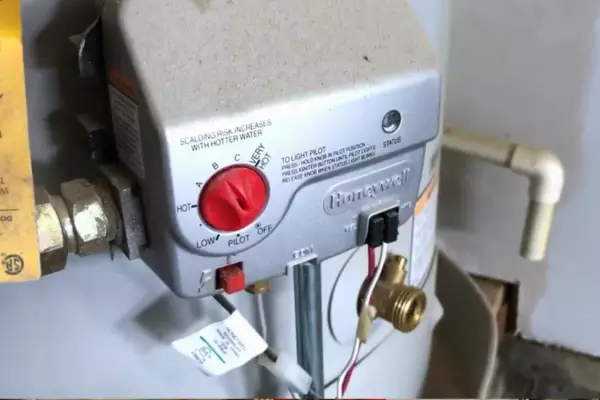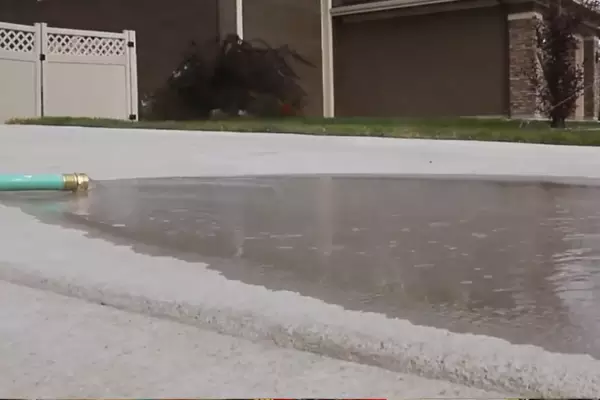Hot water heaters are an integral part of our daily routines, and maintaining them is essential. When faced with a problematic water heater, the solution might be as simple as draining it. This process removes sediments that may impair your heater’s functionality and efficiency.
Draining your water heater might sound complicated, but with the right guidance, it’s a task you can handle. Regular maintenance such as draining enhances your water heater’s lifespan, ensuring you have hot water whenever you need it.
This article sheds light on the process of draining a hot water heater. The focus will be on practical steps and specific details related to draining a Rheem hot water heater, an industry-leading brand known for its high-quality products.
Contents
Basics of Hot Water Heater Maintenance
Draining a hot water heater is a critical maintenance practice. It helps remove mineral deposits and sediments that accumulate at the bottom of the tank over time. These deposits can reduce the heater’s efficiency and even lead to premature failure.
Why Draining is Crucial
- Improves Energy Efficiency
- Prolongs Lifespan of the Heater
- Prevents Build-up of Sediments
Signs You Need to Drain Your Hot Water Heater
- Water Discoloration
- Reduced Hot Water Supply
- Strange Noises from the Heater

Preparation Before Draining
In the world of do-it-yourself maintenance, preparation is the key to success. Prior to beginning the process of draining your hot water heater, it’s crucial to consider safety and assemble the necessary tools.
Safety Measures
Engaging with a water heater involves careful handling of both electricity and hot water, so proper safety precautions are imperative.
- Switch off the Power Source: Before starting the process, ensure to disconnect the power source. For electric heaters, turn off the power at the circuit breaker. If you’re dealing with a gas heater, switch the thermostat to the pilot setting. This step is crucial in preventing any accidents associated with electricity or gas.
- Cool Down the Water: After switching off the power, let the water in the heater cool down. Attempting to drain the heater while the water is still hot can lead to scalding. It’s recommended to wait for a few hours to allow the water to cool naturally.
Tools You Will Need
Gathering the necessary tools beforehand can streamline the draining process.
- A Garden Hose: You’ll need a hose to channel the water from the heater to an appropriate drainage point. Make sure the hose is long enough to reach your chosen drain location without kinking.
- Protective Gloves: As you’ll be dealing with potentially hot water and metal components, wear gloves to protect your hands from any heat or sharp edges.
- Bucket: In some cases, you might need a bucket, especially if you don’t have a hose long enough to reach a drainage point.
Step-by-Step Guide to Drain a Hot Water Heater
Draining a hot water heater is a sequential process that involves careful execution of each step. The following guide provides detailed instructions on how to drain your hot water heater safely and efficiently.
- Switch Off the Power: The first step is to ensure the water heater’s power supply is turned off. If it’s an electric model, switch off the corresponding breaker in your home’s electrical panel. For a gas model, turn off the gas supply or turn the thermostat to the pilot setting.
- Close the Water Supply: Find the cold water supply valve leading to the water heater and turn it off. This step prevents more water from entering the heater while you’re trying to drain it.
- Open the Hot Water Tap: Open a hot water faucet somewhere in your house. This step releases pressure from the system and allows the water to drain from the tank more efficiently.
- Connect the Hose: Attach one end of your garden hose to the drain valve of your water heater. Position the other end of the hose to where you want the water to drain. Remember, the water can be quite dirty, so avoid areas where it could cause staining or harm vegetation.

Draining a Rheem Water Heater
The process of draining a Rheem water heater aligns with that of other models, but there are some specific considerations to note about the location and handling of the drain valve.
- Locate the Drain Valve: The drain valve on Rheem models is typically located towards the bottom of the tank. It should be identifiable as a spout where the hose can be attached.
- Open the Drain Valve: Slowly and carefully open the drain valve. Remember to wear protective gloves for this step to avoid potential injury. Some valves may require the use of a flat-head screwdriver.
- How to Open the Drain Valve on a Rheem Water Heater: Rheem models often feature plastic drain valves with a unique design that sets them apart from other brands. To open the valve, turn it counterclockwise.
- Empty the Tank: Once the valve is open, the water will start flowing out through the hose. Allow the water to drain completely from the tank.
Problems You May Encounter
Despite best efforts, you might encounter some issues during the draining process. Being aware of common problems can help you troubleshoot effectively.
Stuck Valve
Over time, the drain valve might get stuck due to the accumulation of mineral deposits. If this happens, try to gently apply more force using a wrench or a screwdriver. Be careful not to use too much force as this could damage the valve.
No Water Coming Out
If no water comes out when you open the drain valve, this could signal a blockage. Opening a hot water faucet in your house might relieve pressure and allow the water to flow.
Slow Draining
If the water is draining slowly, it’s likely due to sediment buildup in the tank. This is a common issue, especially if the heater hasn’t been drained in a while. To resolve this, you can try using a deliming solution or call in a professional plumber to assist.
After Draining: Flushing the System
Once the tank is drained, the next step is to flush the system. This is an important part of the process as it ensures all residual sediment is removed from the tank.
- Why You Should Flush the Heater: Over time, sediments can accumulate in your hot water heater, impacting its performance and efficiency. Flushing the system after draining helps to clear out any remaining deposits, ensuring your heater operates optimally.
- How to Properly Flush a Hot Water Heater: To flush the system, leave the drain valve open and turn on the cold water supply. Allow the water to flow until it runs clear from the hose, indicating that the remaining sediments have been flushed out.

Refilling the Hot Water Heater
Once you have successfully drained and flushed your hot water heater, the next step is to refill the tank.
- Process of Refilling: Close the drain valve and remove the hose. Then, turn on the cold water supply to start refilling the tank. Monitor an open faucet in your house. Once a steady stream of water starts flowing from the faucet, this indicates that the tank is full.
- Turning the Power Back On: After the tank is refilled, you can turn the power back on. For an electric heater, turn on the circuit breaker. If you have a gas heater, turn the gas supply back on or switch the thermostat back from the pilot setting.
Regular Maintenance for Longevity
To keep your hot water heater operating efficiently and extend its lifespan, regular maintenance, including draining and flushing, is essential.
Benefits of Regular Draining
- Enhanced Energy Efficiency: Regularly draining and flushing your hot water heater can significantly improve its efficiency by removing sediments that can interfere with heat transfer.
- Extended Equipment Lifespan: Sediments and mineral deposits can cause corrosion and damage to your water heater. Regular maintenance helps prevent this damage, thereby extending the lifespan of the heater.
- Consistent Hot Water Supply: Regular draining and flushing of your water heater ensure a steady supply of hot water in your home.
Frequency of Draining Your Hot Water Heater
The frequency of maintenance depends largely on the quality of your water. If your water supply is hard, which means it has a high mineral content, more frequent draining (around every 6 months) might be necessary. If your water is soft, an annual draining should suffice.
Maintaining Your Rheem Water Heater
Regular maintenance of a Rheem water heater includes checking the anode rod and T&P (Temperature & Pressure) valve, along with regular draining. These tasks can prevent major issues, ensuring your water heater operates optimally for a long time.
Professional Help vs. DIY
Deciding whether to drain your water heater yourself or hire a professional depends on your comfort level with performing the task and your ability to troubleshoot potential issues.
When to Seek Professional Assistance
If you encounter problems during the draining process, or if you feel uncomfortable or unsafe performing the task yourself, don’t hesitate to call a professional plumber.
Cost Comparison
While doing it yourself can save money in the short term, hiring a professional to drain and flush your water heater can ensure the job is done correctly, which may prevent costly repairs down the line.
Frequently Asked Questions
How Often Should You Drain Your Hot Water Heater?
The frequency with which you should drain your hot water heater depends on your water quality. If your water supply is hard, which means it has a high mineral content, it’s recommended to drain your heater every six months. However, if your water is soft, you may only need to drain your heater once a year.
Is It Dangerous to Drain a Hot Water Heater Yourself?
Draining a hot water heater can be dangerous if not done correctly, due to the risks associated with handling hot water and electricity or gas. If you follow all safety instructions and precautions, you can safely drain your water heater. Always ensure the water and heater have cooled before beginning, wear protective gloves, and ensure the power supply is disconnected before starting the process.
What If I Can’t Locate the Drain Valve on My Rheem Water Heater?
The drain valve on a Rheem water heater is usually located towards the bottom of the unit. It looks like a spout or tap where you can attach a hose. If you’re having trouble locating it, refer to your user manual or contact Rheem customer service for assistance.
Conclusion
Draining a hot water heater, whether it’s a Rheem or any other brand, is a doable task with the right information. This maintenance procedure is essential in prolonging the life of your heater and ensuring it runs efficiently.
Taking the time to understand the draining process can save you from potential water heater issues in the future. Moreover, the knowledge enables you to perform regular maintenance independently or to discuss the matter more informatively with a professional.
Lastly, remember the importance of safety when carrying out the procedure. Draining a hot water heater involves dealing with hot water and electrical or gas systems. Always prioritize your safety and don’t hesitate to seek professional help if needed.
